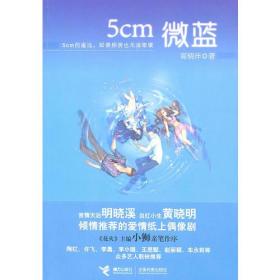
英语修辞学(第2版)
¥ 7.9 1.9折 ¥ 42 八五品
库存10件
江苏镇江
认证卖家担保交易快速发货售后保障
作者张秀国 著
出版社北京交通大学出版社
出版时间2019-09
版次1
装帧平装
货号9787512140318
上书时间2024-12-13
- 最新上架
商品详情
- 品相描述:八五品
图书标准信息
- 作者 张秀国 著
- 出版社 北京交通大学出版社
- 出版时间 2019-09
- 版次 1
- ISBN 9787512140318
- 定价 42.00元
- 装帧 平装
- 开本 16开
- 纸张 胶版纸
- 页数 254页
- 字数 99999千字
- 【内容简介】
-
《英语修辞学(第2版)》分为3个部分,共11章。第1章论述修辞学的定义及其与演讲术的相互关系。第2章介绍英语修辞学及其产生的渊源。第3章分析学习英语修辞的重要意义。第4、5章分别讨论选词和用句。第6~11章重点讨论英语修辞格。其中,第6章讨论修辞格的定义、功能及其使用原则;第7章讨论音形类修辞格;第8、9章讨论句法结构类修辞格;第10章讨论语义类修辞格;第11章讨论逻辑类修辞格。为帮助读者掌握各章内容,每章之后均安排思考题或多种形式的练习题,书末安排综合测试题,并提供部分参考答案。
《英语修辞学(第2版)》为英语专业本科学生使用的教材,也可供英语修辞研究者及具备相当英语阅读能力的英语学习者学习参考。 - 【目录】
-
Part One
Chapter 1 What Is Rhetoric?
1.1 Rhetoric and Oratory
1.2 Connotation of Rhetoric
1.3 Definitions of Rhetoric
1.4 Five Assumptions
Exercises
Chapter 2 Brief History of Western Rhetoric
2.1 Classical Rhetoric(5th c.B.C.-A.D.5 th c.)
2.1.1 Ancient Greece and Ancient Greek Democracy
2.1.2 Sophists and Their Practices of Rhetoric
2.1.3 Ancient Greek Rhetoricians and Their Theory
2.1.4 Roman Rhetoricians and Their Theory
2.2 Rhetoric in the Middle Ages(5th-14th c.)
2.3 Rhetoric in the Renaissance(15th-16th c.)
2.4 New Classical Rhetoric(17th-19th c.)
2.4.1 The Scientific Perspective
2.4.2 The Elocutionary Perspective
2.4.3 The Literary Perspective
2.5 Contemporary Rhetoric
2.6 Conclusion
Exercises
Chapter 3The Importance of Learning English Rhetoric
Exercises
Part Two
Chapter 4 Choice of Words
4.1 Use Suitable Words
4.2 Denotation and Connotation
4.3 General Words and Specific Words
4.4 Abstract Words and Concrete Words
4.5 Short Words and Long Words
Exercises
Chapter 5 Choice of Sentences
5.1 Types of Sentences
5.1.1 Grammatical Classification
5.1.1.1 Simple Sentences
5.1.1.2 Compound Sentences
5.1.1.3 Complex Sentences
5.1.1.4 Compound-complex Sentences
5.1.2 Functional Classification
5.1.2.1 Declarative Sentences
5.1.2.2 Interrogative Sentences
5.1.2.3 Imperative Sentences
5.1.2.4 Exclamatory.Sentences
5.1.3 Rhetorical Classification
5.1.3.1 Loose Sentences
5.1.3.2 Periodic Sentences
5.1.3.3 Balanced Sentences
5.2 Long and Short Sentences
5.2.1 Short Sentences
5.2.2 Long Sentences
5.2.3 Alternating Short and Long Sentences
Exercises
Part Three
Chapter 6 Introduction:Figures of Speech
6.1 What Is a Figure of Speech
6.2 Why Are Figures of Speech Used
6.3 The Classification of Figures of Speech
6.4 Use Figures of Speech in a Right Way
Exercises
Chapter 7 Phonetic Figures of Speech
7.1 Alliteration
7.2 Assonance
7.3 Consonance
7.4 Onomatopoeia
7.5 Aposiopesis
7.6 Apostrophe
7.7 Pun
Exercises
Chapter 8 Syntactic Figures of Speech (Ⅰ)
8.1 Repetition
8.1.1 Immediate Repetition
8.1.2 Intermittent Repetition
8.2 Anaphora
8.3 Epiphora
8.4 Symploce
8.5 Anadiplosis
8.6 Parallelism
8.7 Antithesis
Exercises
Chapter 9 Syntactic Figures of Speech (Ⅱ)
9.1 Climax
9.2 Anticlimax
9.3 Syllepsis
9.4 Zeugma
9.5 Chiasmus
9.6 Asyndeton
9.7 Polysyndeton
9.8 Rhetorical question
Exercises
Chapter 10 Semantic Figures of Speech
10.1 Simile
10.2 Metaphor
10.3 Metonymy
10.4 Synecdoche
10.5 Antonomasia
10.6 Personification
10.7 Parody
10.8 Synesthesia
10.9 Transferred Epithet
Exercises
Chapter 11 Logical Figures of Speech
11.1 Allegory
11.2 Allusion
11.3 Hyperbole
11.4 Understatement
11.4.1 Litotes
11.4.2 Meiosis
11.4.3 Overtones
11.5 Irony
11.5.1 Verbal Irony
11.5.1.1 Light Irony
11.5.1.2 Heavy Irony
11.5.2 Situational Irony
11.6 Innuendo
11.7 Euphemism
11.8 Oxymoron
11.9 Analogy
11.1 0Paradox
Exercises
Appendix A A General Test on Figures of Speech
Appendix B Simplistic Definitions of Figures of Speech
Bibliography
Index
点击展开
点击收起
相关推荐
— 没有更多了 —















以下为对购买帮助不大的评价